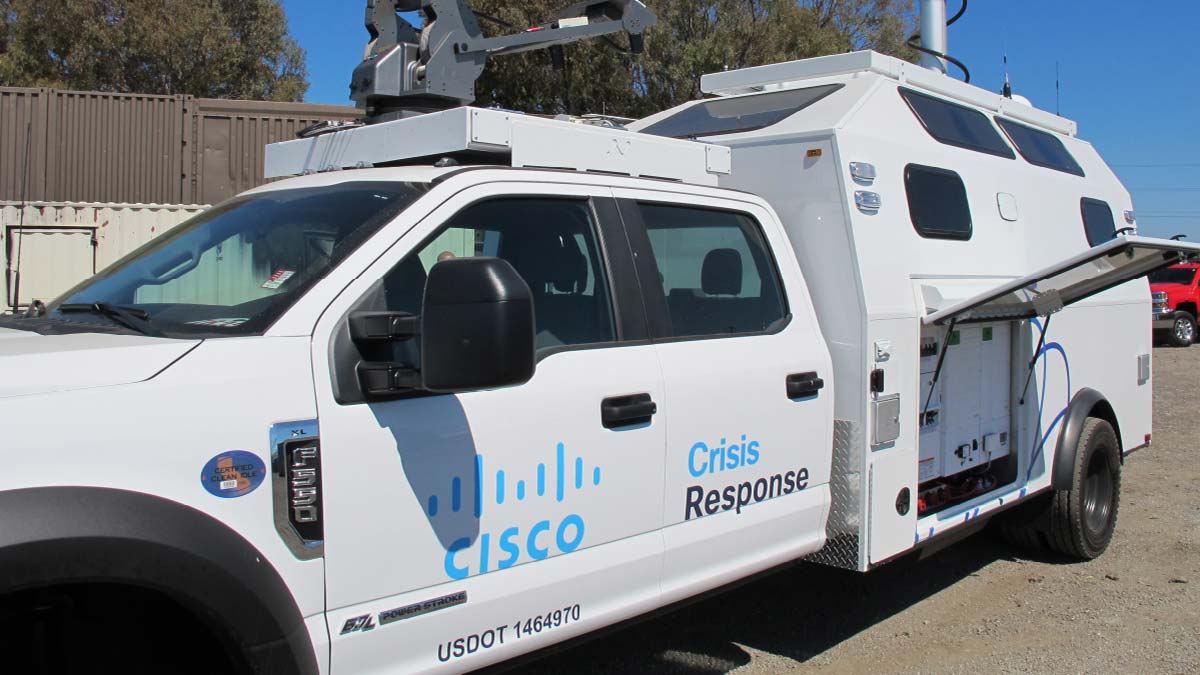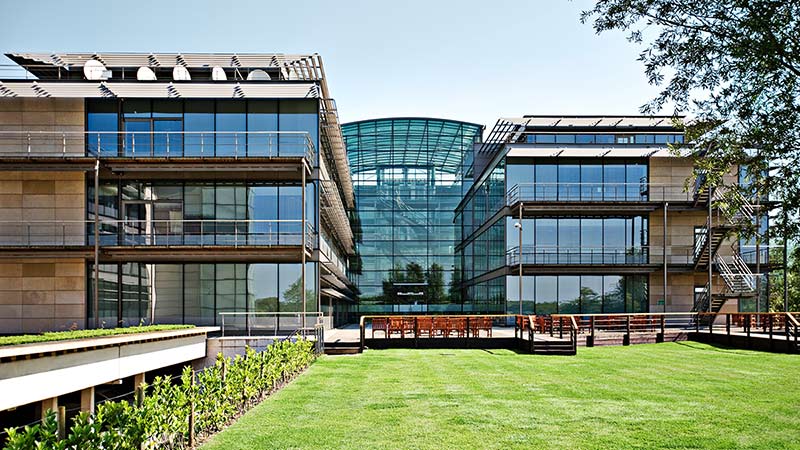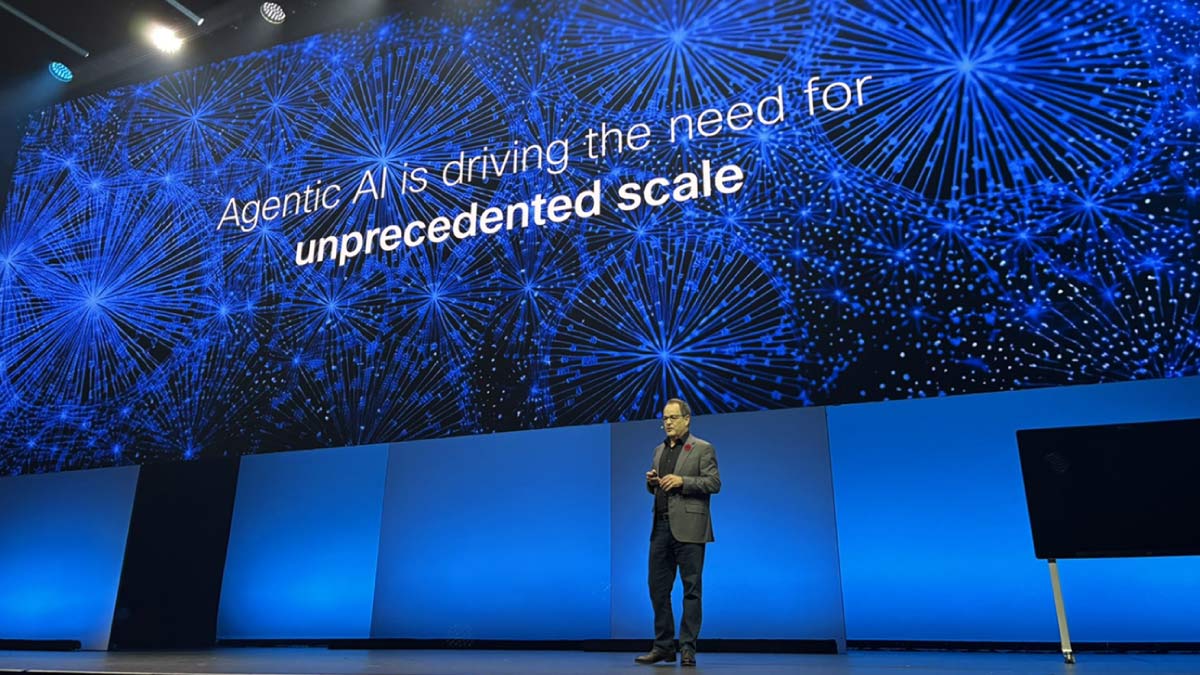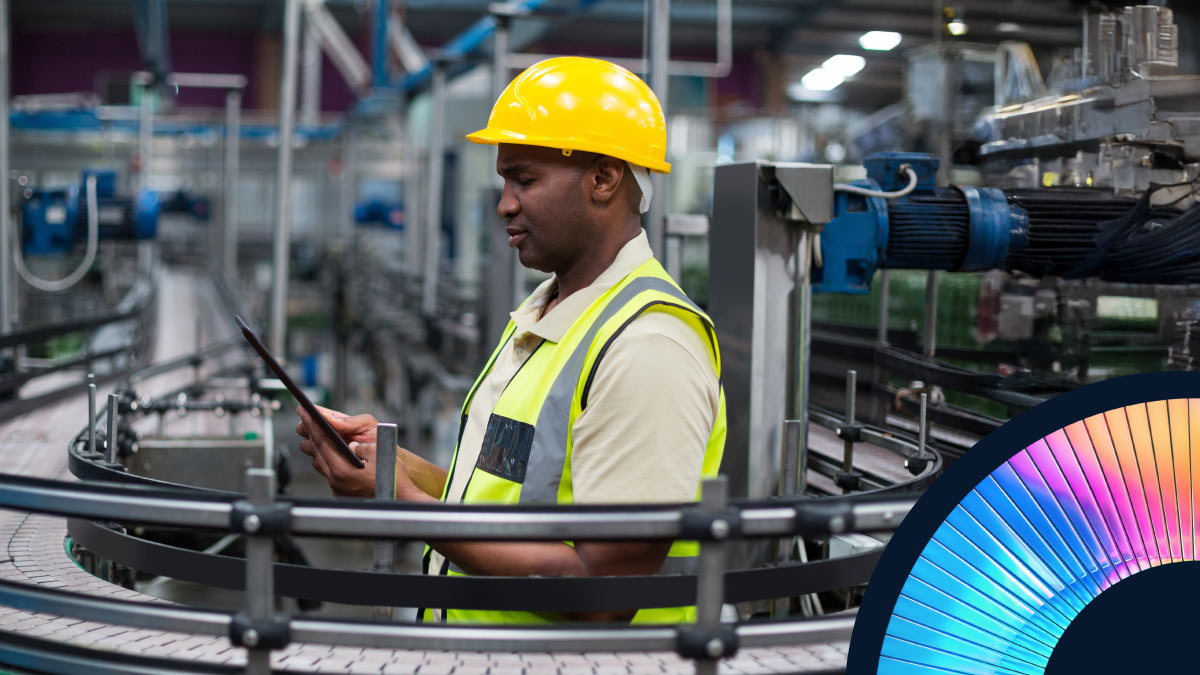When disaster strikes, reliable, secure connections are essential. But if critical infrastructure is down, coordinating responses can be nearly impossible.
That’s why Cisco’s Network Emergency Response Vehicle (NERV) 2.0 can help save the day.
By integrating a wide array of Cisco and Cisco Meraki communications, collaboration and hyperconverged server technologies in a rugged yet agile four-wheel-drive mobile platform, the NERVs are ready for just about any contingency, whether caused by storms, wildfires, cyberattacks, chemical spills, or other unexpected events.
“The Network Emergency Response Vehicle is a great manifestation of Cisco’s commitment to disaster response,” said Eric Knudson, strategy and solutions lead for Cisco Crisis Response, “and for supporting customers and communities that have been affected by a disaster.”
Cisco Crisis Response is a small team of technical engineers, operations experts, and logistics coordinators, along with an extended group of more than 500 Cisco volunteers, known as the CCR Community. The NERVs are part of a suite of solutions that include trailers and portable kits, with similar yet less extensive capabilities than the NERVs.
The two NERVs, which came online last year in San Jose, Calif., and Research Triangle Park in North Carolina, are replacing older vehicles that Cisco operated for nearly 15 years. Incorporating state-of-the-art Cisco and Cisco Meraki equipment, they can race to a disaster scene and offer fast, low-latency, secure connections, especially for first responders.
“When communications infrastructure has been compromised,” said Joseph Harrison, global communications manager for Cisco Crisis Response, “the truck is designed to roll on to the scene and re-establish communications for emergency responders. That would include public and private agencies, like local and state emergency response and on up to federal agencies, like FEMA. But also, the nonprofits and other organizations that work together to provide support to affected communities.”
A redesign of a proven concept
The older vehicles responded successfully to a wide range of emergencies over their eventful 15-year run. But the NERV 2.0 vehicles represent an effort to completely rethink operational design for added resiliency, security, and sustainability.
“On the networking side,” explained Matt Runyan, CCR’s mission readiness and deployments lead, “we decided on fully redundant components. The new trucks are Meraki network based. So, we have wireless access points, as well as a hyperflex compute-cluster. And we have dual switches, dual security, and dual servers, while still using less energy than the older trucks.”
The result is a suite of communications options, including wired, cellular and WiFi wireless, and Cisco Webex for video collaboration, integrated with Webex Desk Pro and Webex Cameras. Meraki Internet of Things (IoT) and smart-camera technology supplies constant data, monitoring, and control of systems and the surrounding environment.
“We can extend the capabilities of existing ad-hoc networks through wired cable connections,” said Knudson, “because the NERV acts like a mini service provider. It’s also got several satellite and cellular solutions and generates football fields worth of WiFi that could cover a firefighting camp or temporary refugee center.”
IoT solutions include air-quality monitoring, which Knudson sees as a potentially important capability.
“I love the data that I’m able to get out of the Meraki air-quality sensors in the truck,” he said.
“We’re not only able to check to see what the particulate count is, which would be especially valuable in a wildfire situation, but we can make sure that whoever is deployed knows to use the right filters and protection.”
Secure and sustainable, for any emergency
Security, of course, is of paramount importance in any potential disaster situation. Cybercriminals can cause a crisis themselves with an attack on public utilities or exploit vulnerabilities that arise during an existing emergency.
“It was a conscious decision to integrate Cisco Meraki tech,” explained Harrison, “for the robust security features that are built-in, but also because Meraki is just super user friendly and intuitive.”
Additional security layers include Cisco Umbrella and Wired and Wireless Intrusion Prevention Systems (IPS, wIPS). These are essential lines of network defense in preventing a malware or ransomware attack, and when restoring operations following a major breach.
“After a cyberattack,” Knudson said, “an organization’s engineers are trying to clean up the malware and recover from the attack. But they may need a separate, secure network that they can rely on during the recovery.”
Environmental sustainability was another key design goal. Unlike the previous generation of vehicles, which relied on diesel generators, all networking equipment is powered by batteries that can be recharged as the truck drives, or by connecting with external, solar-panel arrays.
“For these new vehicles we wanted to improve our core mission, providing communications connectivity,” said Runyan, “but do it in a more sustainable way. So, while the previous trucks were burning diesel 24 hours a day, the newer vehicles carry about 85 kilowatt-hours worth of batteries.”
Whenever possible, systems and devices run off low-voltage DC power, which also eliminates the loss of energy in converting from AC voltage.
While the next-generation NERVs have yet to receive their “baptism by fire” in a mission-critical disaster, they stand poised and ready to serve. In the meantime, the teams are busy demonstrating the vehicles’ capabilities and raising awareness at technology events, schools, and for first responders.
As Knudson pointed out, many disaster-relief organizations still rely on two-way radios for their communications, and the NERV showcases the added dimensions that digital communications offer.
“Our customers and partners have digitally transformed their operations over the past few decades,” he said. “Cisco’s role in this space will only be more and more important moving forward; secure internet and private connectivity is really what’s needed in an emergency.”
When the time comes, the teams, trucks, and technology will be ready. Knudson stressed that Cisco Crisis Response has global reach and myriad partners, including the United Nations and Mercy Corps, and he’s excited to share the latest innovations from his team.
“We welcome any opportunity to have a conversation with a customer or an interested party,” he said. “It’s the first responders, emergency managers, and others who are really doing the tough jobs during crises. And the NERVs are only the latest representation of our mission — to support them with the best technology and connections whenever disaster strikes.”





